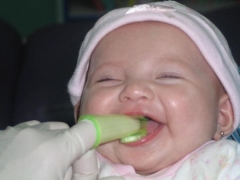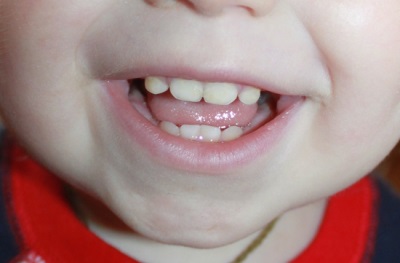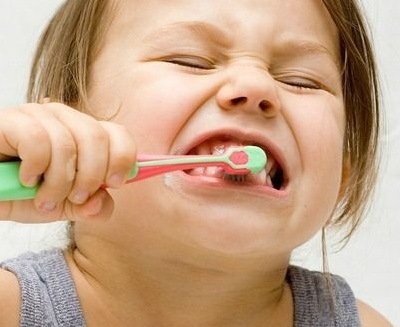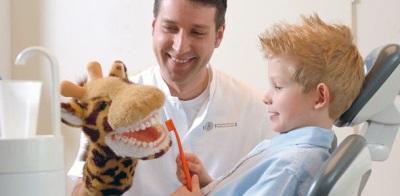Yellow plaque on the teeth of a child
The child’s snow-white smile always pleases his parents, and any problems with teeth in children are worrying. If a dark spot appears on the teeth, indicating the development of caries, in most cases the baby is shown to the dentist. But what if the teeth are covered with a bloom of yellow? Is it dangerous, why do children's teeth turn yellow and is it necessary to do something with such a change in the color of tooth enamel?
The reasons
A raid on a child’s teeth is accumulated food debris, dead mucous particles and bacteria, among which are both pathogenic and beneficial. As a rule, plaque accumulates on the teeth during the day, as well as at night, so cleaning in the morning and before bedtime helps to eliminate it in time.
The yellowish bloom itself is not a diagnosis, but may be evidence not only of dental problems, but also of other diseases. Milk teeth differ in white with a blue tint, therefore, if they are covered with a bloom with yellow color, it immediately becomes noticeable. The reason for this situation is:
- Untimely removal of plaque from food, when the child irregularly brushes teeth.
- Coloring at the wrong time removed white bloom dyes from food and drink.
- Chewing on one side due to bite problems or painful sensations in the teeth with caries.
- Excess in the children's diet of carbohydrate foods, as well as the lack of solid foods that need to chew for a long time.
- Dysbacteriosis and immaturity of the enzymatic system in the children's body.
- Weakened local immunity due to a decrease in the body's defenses, medication or over-dried air.
- Application to clean the wrong toothbrush and unsuitable toothpaste.
- Drinking strong black tea or coffee.
- Underdevelopment of tooth enamel caused by abnormalities during pregnancy, for example, severe toxemia or acute infection in the mother.
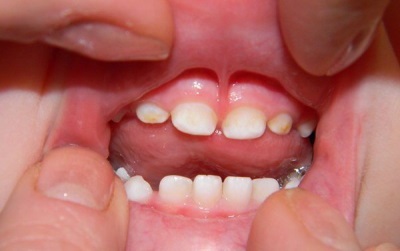
Why can even teeth turn yellow in a one year old child?
The appearance of yellow bloom on the teeth of an infant baby often indicates bottle caries. So called the form of surface caries, caused by prolonged feeding from a bottle and drinking from it at night sugary drinks (juices, compotes).
Due to the long ingestion of food or drink in the baby’s mouth and the lesser strength of the enamel of milk teeth, caries develops in such situations very quickly.
Treatment
In most cases, to eliminate yellow bloom from children's teeth, it is enough to pay only increased attention to daily hygiene. The teeth are thoroughly cleaned, picking up a child with a suitable age brush, as well as a toothpaste recommended by the dentist.
In situations where the yellow bloom is compacted and is not removed by cleaning the house, you can brush your teeth at the dentist. In this case, no home teeth whitening techniques in childhood should not be carried out.
If yellow patina represents the first signs of caries, it should certainly be treated, since ignoring this symptom will allow the infection to penetrate deeper and sometimes lose teeth. The child should be examined by a dentist and select the desired treatment method. If the damage is superficial, the child may be recommended fluoridation or silvering.These techniques will protect the teeth from further spread of infection.
Prevention
In order for children's teeth not to be covered with yellow bloom, it is advised:
- To monitor the hygiene of the child’s teeth by brushing them twice a day using children's brushes, and from 2 years of age - and children's pastes.
- As soon as the first teeth erupted, discard the bottles and nipples, teaching the child to drink the cup and the cup.
- Humidify the air in the nursery so that the mouth of the mucous does not dry up in a child, and the saliva produced protects the teeth from bacteria.
- Provide your child with a balanced diet with a sufficient amount of vegetables, fruits and foods rich in calcium.
- Regularly go with the baby for a visit to the dentist, so that the doctor can identify problems with the teeth and eliminate them in the early stages.
The program by Dr. Komarovsky tells about the child’s first teeth and care for them.
